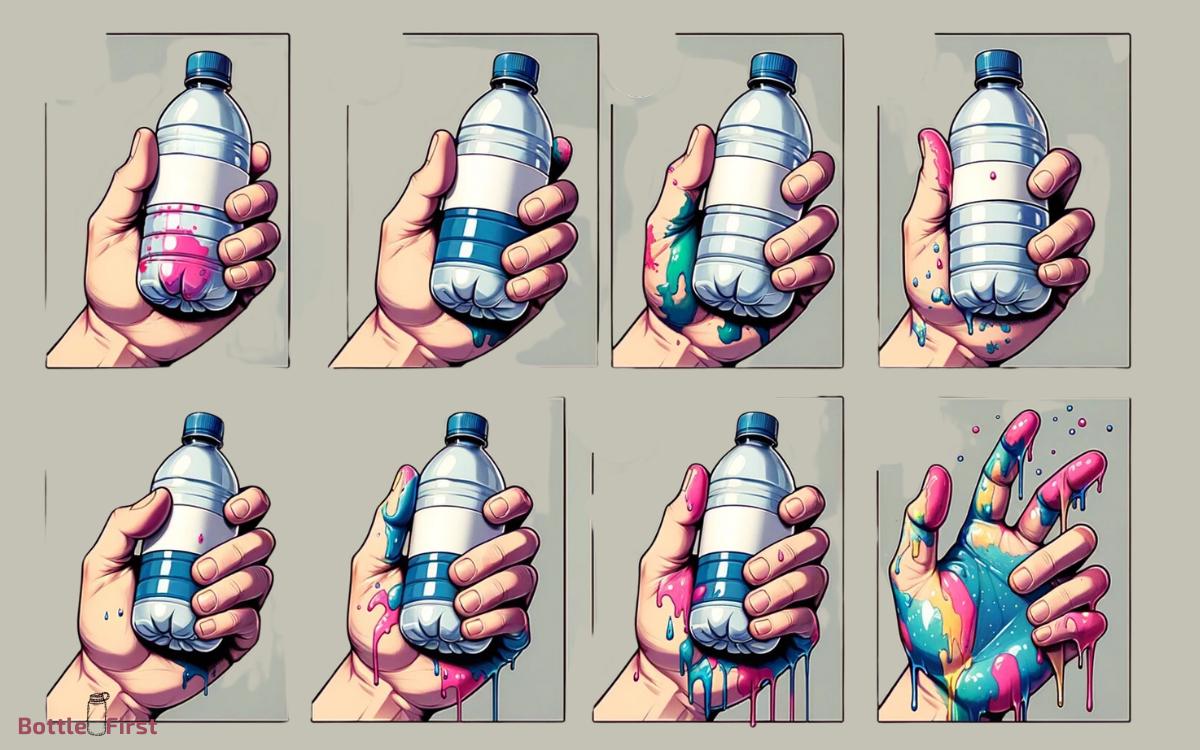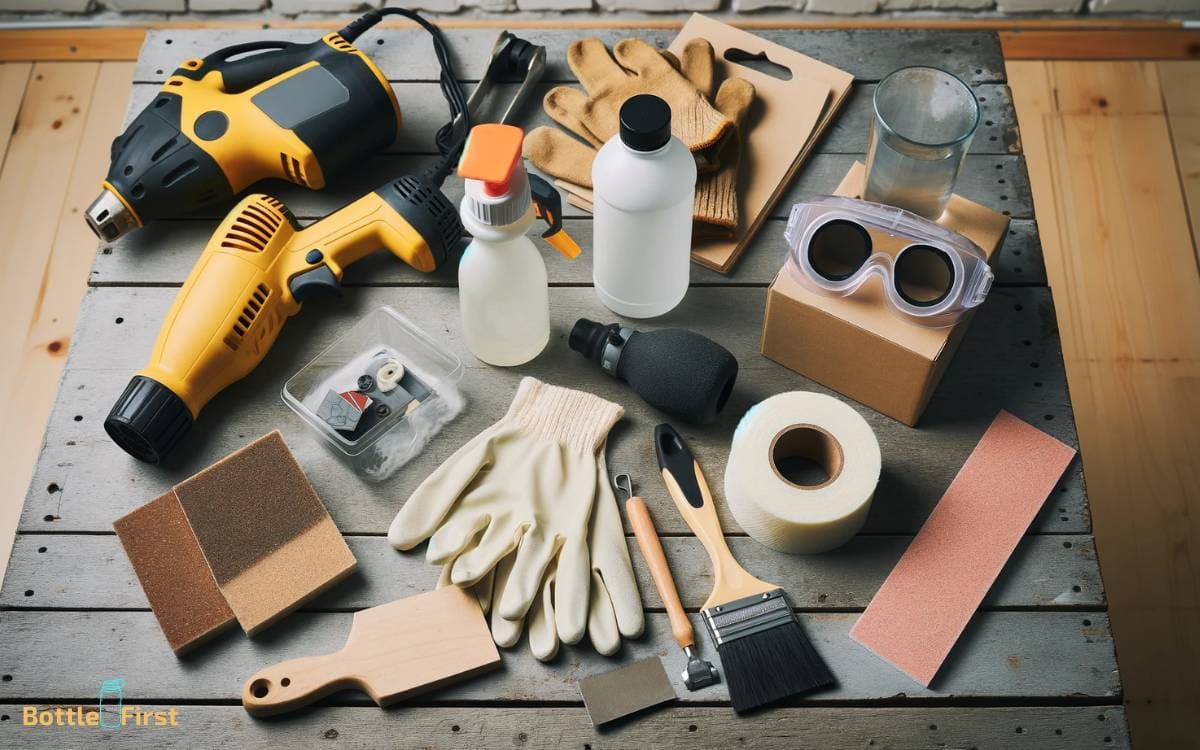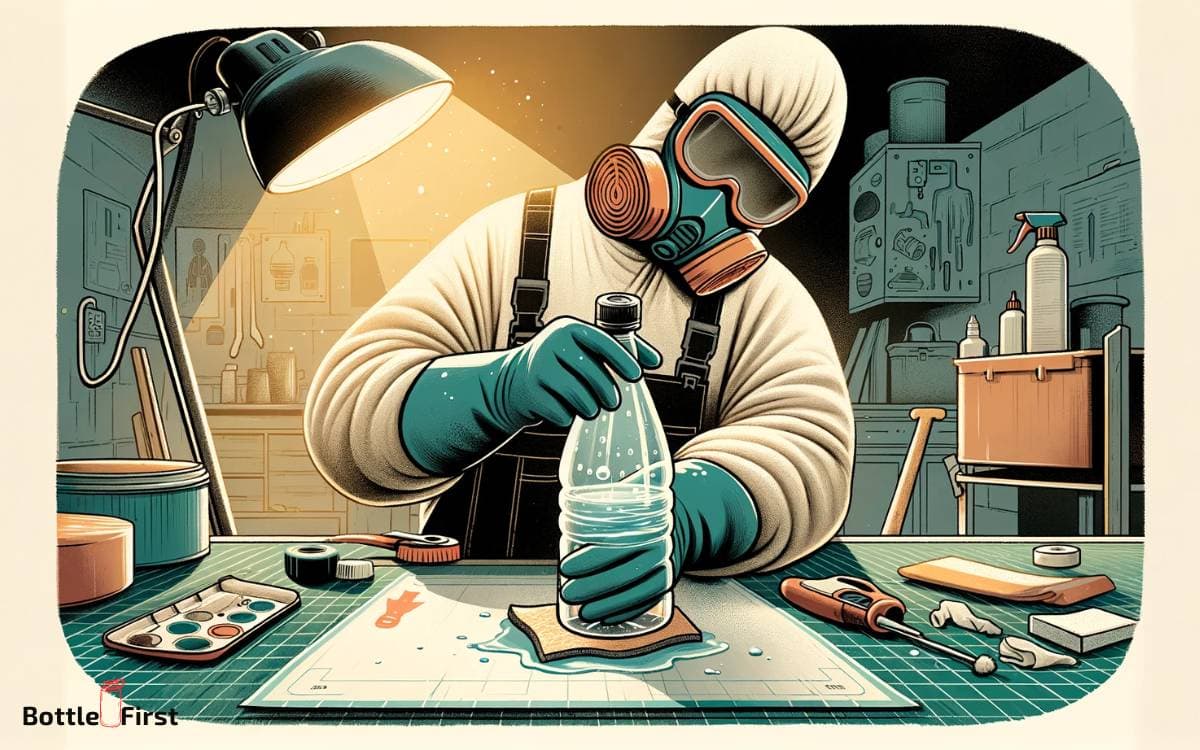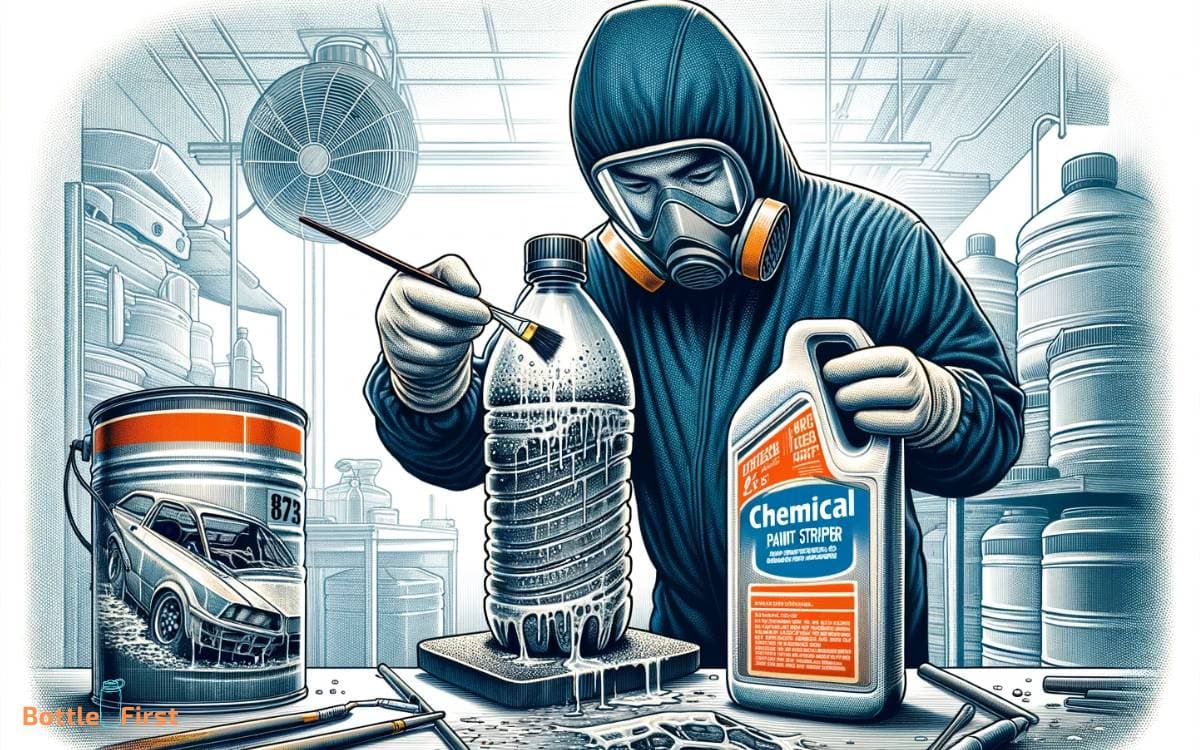How to Remove Paint from Water Bottle? 3 Easy Methods!
To remove paint from a water bottle accurately and safely, consider using chemical paint strippers, a heat gun, or sanding methods. Each technique requires careful handling to avoid damaging the bottle.
Chemical strippers dissolve paint, a heat gun softens it, and sanding abrasively removes it.
Follow the specific steps for each method, such as applying the stripper as per instructions, cautiously using the heat gun to avoid melting the plastic, and sanding with progressively finer grits for a smooth finish.
Remember to work in a ventilated area when using chemicals or heat and always wear protective gear.
Ensuring your water bottle is free from old, chipped paint not only restores its original look but also prepares it for a new custom design or simply for a cleaner appearance.
Choose a method that suits your needs and handle the materials with care for successful paint removal.
Key Takeaway
Materials Needed
To remove paint from a water bottle, you will need a few essential materials.
- Firstly, you’ll require a non-abrasive scrubbing pad or a soft-bristled brush to gently scrub away the paint without damaging the bottle’s surface.
- Next, you will need a gentle solvent such as rubbing alcohol, acetone, or nail polish remover to dissolve the paint.
- Additionally, a pair of protective gloves and safety goggles are essential to protect your skin and eyes from any potential chemical exposure.
- A clean, dry cloth will also be necessary to wipe away the dissolved paint and ensure a smooth, paint-free surface.
- Lastly, having a well-ventilated workspace is crucial when using solvents to prevent inhaling harmful fumes.
These materials will enable you to effectively and safely remove paint from your water bottle, allowing for a pristine and reusable container.
Preparation Steps
The initial step in preparing to remove paint from a water bottle involves gathering all the necessary materials and ensuring a well-ventilated workspace.
Start by acquiring a pair of protective gloves, safety goggles, a mask, and a well-ventilated area. These items are crucial for personal safety during the paint removal process.
Additionally, lay down a protective covering on your work surface to prevent any damage. It’s also important to read the instructions on the paint removal product carefully to ensure proper usage and safety.
Furthermore, consider conducting a small test in an inconspicuous area of the water bottle to assess the effectiveness of the paint removal method.
Method 1: Using Chemical Paint Stripper
Method 1 for removing paint from a water bottle involves applying a chemical paint stripper to the affected area and continuing the preparation steps previously discussed.
Before applying the chemical paint stripper, ensure that the water bottle is clean and dry. Then, carefully follow the instructions provided by the paint stripper manufacturer, as these products can vary.
Apply the chemical paint stripper to the painted areas of the water bottle, ensuring full coverage. Allow the stipulated time for the paint stripper to work its magic, and then use a scraper or a coarse cloth to remove the softened paint.
Method 2: Using a Heat Gun or Hair Dryer
Continuing from the previous method, how can a heat gun or hair dryer be used to remove paint from a water bottle? Using heat to remove paint is an innovative and effective method.
A heat gun or hair dryer can be used to soften the paint on the water bottle, making it easier to scrape off.
Here’s a comparison of the two methods:
| Heat Gun | Hair Dryer |
|---|---|
| Emits very high temperatures, making it faster to remove paint | Emits lower temperatures, so it may take longer to soften the paint |
| Requires caution due to high temperatures | Safer to use, but may require more time and effort |
| Ideal for larger paint removal tasks | Suitable for smaller areas or delicate bottles |
| More expensive investment | More affordable and commonly available |
| Can emit fumes, so proper ventilation is necessary | Usually does not emit fumes, making it a more convenient option |
Using heat to remove paint offers a unique and efficient alternative to chemical methods.
Method 3: Sanding and Scraping
Using sanding and scraping as a method to remove paint from a water bottle provides a hands-on approach to tackling stubborn or intricate areas that may not be effectively addressed by other methods.
This method involves using sandpaper to gently sand away the paint, followed by using a scraper to remove any remaining paint residue.
It is particularly effective for textured or contoured surfaces which other methods may struggle to reach.
When employing this technique, it is essential to use fine-grit sandpaper to avoid damaging the underlying material of the water bottle.
Additionally, a steady hand and attention to detail are crucial to ensure an even and thorough removal of the paint.
Sanding and scraping provide a meticulous and targeted approach to paint removal, making it an innovative solution for challenging paint removal tasks.
Conclusion
In conclusion, removing paint from a water bottle can be achieved using various methods such as a chemical paint stripper, heat gun, or hair dryer, and sanding and scraping.
Regardless of the method used, it is important to take proper safety precautions and follow the instructions carefully to avoid any accidents.
While the process may require some time and effort, the end result of a clean and paint-free water bottle is definitely worth it.
Frequently Asked Questions
Can I Use the Same Methods to Remove Paint From a Stainless Steel Water Bottle?
Yes, the same methods can be used to remove paint from a stainless steel water bottle. However, it’s important to ensure that the method chosen is safe for the stainless steel material to avoid damage.
Will Any of These Methods Affect the Safety or Integrity of the Water Bottle?
The methods for removing paint from a stainless steel water bottle should not affect the safety or integrity of the bottle if executed properly. It’s crucial to follow the manufacturer’s guidelines and use appropriate materials for the task.
Can I Use Household Items as Alternatives to the Recommended Materials?
Can household items serve as substitutes for recommended materials when removing paint from a water bottle?
Exploring innovative alternatives while ensuring safety and effectiveness is key. Careful consideration of materials’ impact on the bottle’s integrity and safety is imperative.
How Can I Prevent the Paint From Coming Off in the Future?
To prevent paint from coming off in the future, ensure proper surface preparation and use high-quality, durable paint specifically designed for the material of your water bottle. Apply a protective clear coat for added resilience against wear and tear.
Are There Any Special Precautions I Should Take When Working With Plastic Water Bottles?
When working with plastic water bottles, it’s crucial to consider the material’s sensitivity to certain chemicals and abrasives.
Special precautions should include using non-abrasive cleaners, avoiding harsh solvents, and testing any new cleaning products on a small area first.






